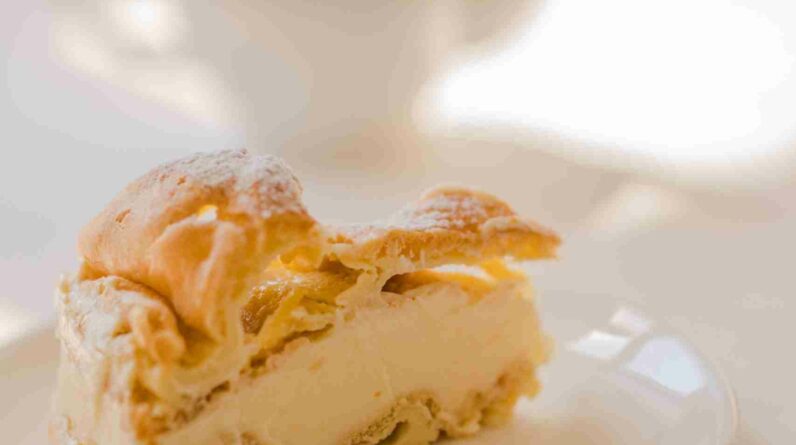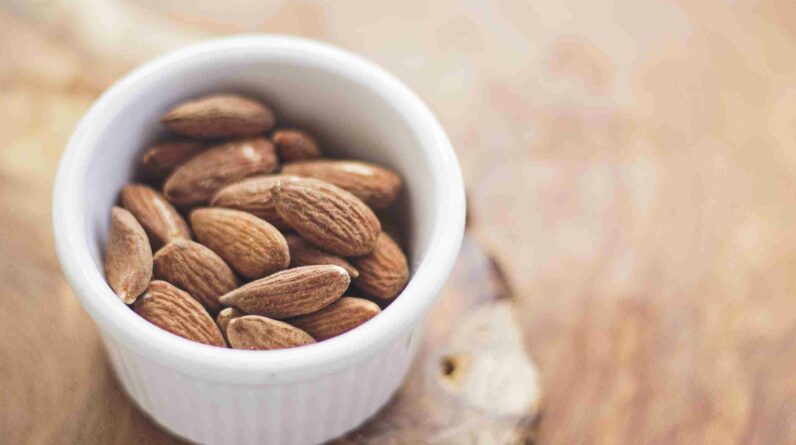Have you ever wondered how to safely clean a kitchen exhaust hood? Well, you’re in luck! Our article provides you with all the information you need to clean your kitchen exhaust hood effectively and stay safe in the process. From the tools and materials you’ll need to the step-by-step instructions, we’ve got you covered. Say goodbye to grease and grime, and hello to a clean and fresh kitchen!

Importance of Cleaning Kitchen Exhaust Hood
Keeping our kitchen exhaust hood clean is not just a matter of aesthetics. It plays a crucial role in ensuring the safety and functionality of our kitchen. Here are three reasons why cleaning the kitchen exhaust hood is of utmost importance:
Prevents Fire Hazards
One of the primary reasons why we should regularly clean our kitchen exhaust hood is to prevent fire hazards. As we cook, grease and oil particles accumulate on the interior surfaces of the hood, including the filters and ductwork. Over time, this buildup becomes highly flammable, increasing the risk of a fire breaking out in the kitchen. By cleaning the hood regularly, we can remove this grease buildup and minimize the chance of a dangerous fire occurring.
Improves Air Quality
A clean kitchen exhaust hood improves the air quality in our kitchen and throughout our home. When we cook, smoke, steam, and unwanted odors are generated. The exhaust hood is designed to capture and remove these airborne particles, ensuring that our kitchen remains a healthy and pleasant environment. However, when the hood is clogged with grease and debris, it becomes less effective in removing these contaminants from the air. Regular cleaning ensures that the exhaust hood functions at its maximum capacity, effectively improving the air quality in our kitchen and reducing the risk of lingering odors.
Extends Lifespan of the Hood
Cleaning our kitchen exhaust hood on a regular basis can significantly extend its lifespan. The accumulated grease and debris not only impede the hood’s efficiency but also accelerate the wear and tear of its components. The excessive buildup can strain the fan motor, clog the filters, and corrode the ductwork. By regularly maintaining and cleaning the hood, we can ensure that it operates efficiently and lasts for many years to come, saving us the expense of premature replacement.
Preparing for Cleaning
Before we embark on the journey of cleaning the kitchen exhaust hood, it’s essential to prepare ourselves and the surrounding area. Here are the necessary steps to take:
Gather Necessary Supplies
To clean the kitchen exhaust hood effectively, we will need a few supplies. This includes a degreaser or warm soapy water, a bucket, scrub brushes, microfiber cloths, a vacuum cleaner, and protective gear such as gloves, goggles, and aprons. Having these supplies readily available will make the cleaning process smoother and more efficient.
Turn Off Power
For safety reasons, it’s crucial to turn off the power to the kitchen exhaust hood before cleaning it. This can usually be done by switching off the corresponding circuit breaker in our electrical panel. Ensuring that there is no electrical power flowing to the hood will minimize the risk of accidents during the cleaning process.
Protect surrounding areas
Cleaning the kitchen exhaust hood can be a messy task, with greasy residue and cleaning solutions potentially splattering onto nearby surfaces. To protect our countertops, stove, and floors, it’s advisable to place drop cloths or newspapers underneath the hood. This will prevent any accidental stains or damage, making the cleaning process more convenient and stress-free.

Cleaning the Exterior of the Hood
Remove Grease Buildup
The first step to cleaning the kitchen exhaust hood is to remove any visible grease buildup on the exterior surfaces. Grease tends to accumulate on the exterior of the hood, particularly near the vent openings. To remove this grease, we can use a degreaser or warm soapy water and a scrub brush. The degreaser can help break down the accumulated grease, making it easier to clean.
Wipe Down with Warm Soapy Water
After removing the grease buildup, we should proceed to wipe down the entire exterior of the hood with warm soapy water. Using a microfiber cloth or sponge, we can gently scrub the surfaces, ensuring that we cover all areas of the hood. This step helps to remove any remaining grease, dirt, or stains on the exterior, leaving our kitchen exhaust hood looking clean and fresh.
Rinse and Dry
Once we have thoroughly cleaned the exterior of the hood with warm soapy water, it’s essential to rinse off any residue. This can be done by wiping the surfaces with a damp cloth or sponge. It’s crucial to ensure that no soap or cleaning solution is left behind, as this can lead to streaks or discoloration on the hood. After rinsing, we should dry the exterior surfaces using a clean cloth, ensuring that no moisture remains.
Cleaning the Filters
The kitchen exhaust hood filters play a significant role in trapping grease, smoke, and odors as they pass through the ventilation system. Cleaning these filters regularly is essential to maintain the efficiency of the hood. Here’s how we can clean the filters effectively:
Remove and Soak in Degreaser
To begin the cleaning process, we should remove the filters from the hood. Most filters can be easily detached by releasing the latches or twisting them off. Once removed, we can soak the filters in a degreaser solution to break down and loosen the accumulated grease. It’s important to follow the instructions on the degreaser product regarding the appropriate soaking time.
Scrub and Rinse
After the filters have soaked for the recommended duration, we can scrub them gently with a brush to remove any remaining grease or debris. It’s essential to use a non-abrasive brush to avoid damaging the filters. We can also rinse the filters under running water to wash away the degreaser and any loosened particles.
Dry and Reinstall
Once the filters have been thoroughly cleaned and rinsed, it’s important to allow them to dry completely before reinstalling them in the hood. Placing the filters in direct sunlight or using a fan can help expedite the drying process. Once dry, we can reinstall the filters back into the hood, ensuring that they fit securely and firmly in their proper position.

Cleaning the Ductwork
The ductwork of the kitchen exhaust hood carries the airborne contaminants away from the cooking area and expels them outside. Over time, the ductwork can accumulate grease, dirt, and other debris, reducing its efficiency and potentially causing unpleasant odors. Cleaning the ductwork should be done periodically to ensure optimal performance. Here’s how:
Inspect the Ductwork
Before starting the cleaning process, it’s important to visually inspect the ductwork for any signs of damage or blockages. Look for loose connections, holes, or excessive grease buildup. If any issues are detected, it may be necessary to consult a professional for repairs or further assistance.
Use a Vacuum to Remove Debris
To clean the ductwork, we can use a vacuum cleaner with a long hose attachment. Carefully insert the hose into the ductwork, reaching as far as possible to remove accumulated debris. Move the hose in a slow and deliberate manner to ensure effective cleaning. Focus on areas where grease buildup is visible or any sections that may be prone to blockages.
Scrub with Brush and Cleaning Solution
For stubborn grease or dirt deposits inside the ductwork, we may need to use a brush and cleaning solution. There are specialized brushes available that are designed to effectively clean the interior surfaces of the ductwork. Dip the brush into the cleaning solution and scrub the areas that require extra attention. Rinse the brush regularly to prevent spreading the grease or dirt.
Cleaning the Fan
The fan within our kitchen exhaust hood is responsible for pulling the air, smoke, and odors through the filters and ductwork. Cleaning the fan is crucial to ensure its proper functioning and prevent the accumulation of grease and debris. Here’s how we can clean the fan:
Access the Fan
Before cleaning the fan, we need to ensure that we have access to it. In some hood models, the fan may be accessible by simply removing a few screws or latches. Consult the manufacturer’s instructions or refer to the hood’s user manual to determine the appropriate method to access the fan.
Remove and Clean Fan Blade
Once we have gained access to the fan, it’s crucial to remove the fan blade for cleaning. Most fan blades can be detached by unscrewing them or releasing the latches holding them in place. Once removed, we can clean the fan blade with warm soapy water and a brush. Take extra care not to bend or damage the blades while cleaning.
Clean Fan Housing
While the fan blade is removed, we should also clean the fan housing. Grease and dirt can accumulate around the fan motor and in the housing, affecting the performance of the fan. Wipe the housing with a damp cloth or sponge, ensuring that all visible grease and debris are removed. Avoid getting any cleaning solution or excessive moisture on the fan motor or electrical components.

Cleaning the Exhaust Vent
The exhaust vent is the final pathway through which the air, grease, and odors are expelled from our kitchen. Cleaning the exhaust vent is essential to ensure that it remains clear from blockages and operates efficiently. Here’s how we can clean the exhaust vent:
Inspect and Remove Debris
Start by inspecting the exterior of the exhaust vent for any visible debris or blockages. Leaves, sticks, or other outdoor elements may become lodged in the vent over time. Carefully remove any obstructions, ensuring that the vent is clear and unobstructed.
Clean with Brush and Detergent
To clean the interior of the exhaust vent, use a brush and a suitable detergent or cleaning solution. Dip the brush into the solution and insert it into the vent, moving it in a back-and-forth motion to dislodge any accumulated grease or dirt. Be thorough in cleaning the entire length of the vent, as even small obstructions can hinder the airflow.
Ensure Proper Ventilation
After cleaning the exhaust vent, it’s important to ensure that it is providing proper ventilation. Check the exterior vent cover to make sure it opens and closes correctly. Additionally, observe the airflow while the hood is operating to verify that the exhaust vent is expelling the air outside effectively. If any issues are noticed, it may be necessary to consult a professional for further assessment.
Addressing Persistent Odors
Sometimes, even after thorough cleaning, persistent odors may linger in the kitchen. Here are a few steps we can take to address these odors effectively:
Check for Blockages
Persistent odors may be an indication of blockages within the ventilation system. Inspect the filters, ductwork, and exhaust vent for any clogs or accumulated debris. Remove any obstructions, ensuring that the airflow is unrestricted.
Clean with Odor Neutralizer
Using an odor neutralizer can help eliminate lingering smells in our kitchen. There are commercial odor neutralizers available that are specifically designed for kitchen environments. Follow the manufacturer’s instructions and apply the neutralizer as directed, targeting areas where the odors are the strongest.
Consider Professional Help
If persistent odors persist despite our best efforts, it may be necessary to seek professional assistance. Professional kitchen exhaust hood cleaning services have the expertise and specialized tools to thoroughly clean and deodorize our hood and ventilation system. They can identify and address any underlying issues that may be causing the persistent odors.

Regular Maintenance Practices
In addition to periodic deep cleaning, implementing regular maintenance practices can help keep our kitchen exhaust hood in optimal condition. Here are a few practices to incorporate into our routine:
Wipe Down Regularly
Regularly wiping down the exterior surfaces of the kitchen exhaust hood can help prevent the buildup of grease and dirt. Using a damp cloth or sponge, wipe away any visible residue or stains. Regular wiping will make our deep cleaning sessions more manageable and prevent excessive grime accumulation.
Clean Filters Monthly
The filters within our kitchen exhaust hood should be cleaned on a monthly basis. This ensures that they are free from excessive grease and debris, allowing them to perform efficiently. Set a reminder to remove, soak, scrub, rinse, dry, and reinstall the filters at least once a month.
Schedule Professional Cleaning
While regular maintenance is crucial, it’s also essential to schedule professional cleaning for our kitchen exhaust hood. Professional cleaning services have specialized tools and knowledge to thoroughly clean and maintain the hood and its components. A professional cleaning should be scheduled annually or more frequently if the hood experiences heavy usage.
Safety Precautions
When cleaning our kitchen exhaust hood, we need to prioritize safety. Here are a few important safety precautions to keep in mind:
Use Protective Gear
Before starting the cleaning process, ensure that you are wearing the appropriate protective gear. This includes gloves, goggles, and an apron. These items will help protect your hands, eyes, and clothing from the grease, cleaning solutions, and potentially harmful particles.
Avoid Harsh Chemicals
When selecting cleaning products, avoid using harsh chemicals that can damage the hood’s surfaces or pose a health risk. Opt for mild degreasers or warm soapy water to effectively clean the hood without causing any harm.
Follow Manufacturer’s Instructions
It’s crucial to read and follow the manufacturer’s instructions or guidelines when cleaning the kitchen exhaust hood. Different hood models may have specific requirements or recommendations to ensure effective and safe cleaning. Adhering to these instructions will help prolong the lifespan of the hood and prevent any unnecessary damage.
In conclusion, cleaning our kitchen exhaust hood is essential to prevent fire hazards, improve air quality, and extend the lifespan of the hood. By following the proper cleaning procedures, maintaining regular maintenance practices, and prioritizing safety precautions, we can ensure that our kitchen remains a safe and healthy environment. So let’s roll up our sleeves, gather the necessary supplies, and start cleaning our kitchen exhaust hood today!









